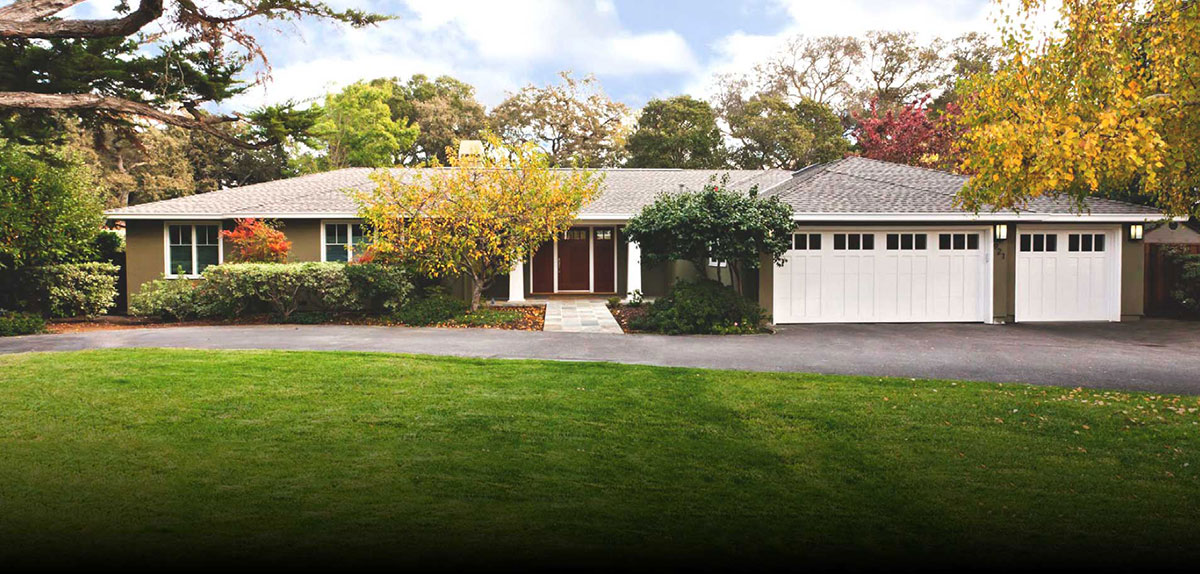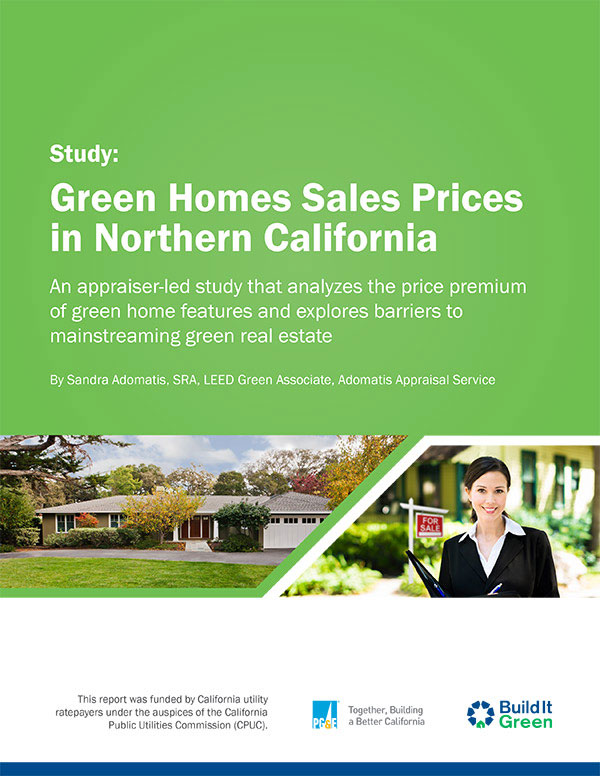

A rigorous study, released today by Build It Green and funded by Pacific Gas and Electric Company (PG&E), shows that green-certified homes in California bring a higher sales price, even though market barriers often prevent the full value of the home’s green features from being recognized. The study results add to a growing body of similar findings across the country that show green home improvements provide a financial return on investment (ROI). However, the study also finds significant market barriers to valuing green homes and describes how the price premium could be much higher if key barriers were eliminated.
“We already know that consumers prefer greener homes because they save money, conserve resources, and provide greater comfort and health benefits,” says Karin Burns, Executive Director of the nonprofit Build It Green, which commissioned the study. “Now we can add one more benefit to that list—greater resale value. We also believe that this ROI could be much higher if key market barriers were removed.” For example, while countless homes have extensive green features, relatively few are properly documented, scored, or certified, and green home features are often not listed on the Multiple Listing Service (MLS).
To conduct the research and author the study, Build It Green chose Sandra K. Adomatis, a real estate appraiser, instructor, author, and nationally recognized expert on the valuation of green and high-performing homes. The study, Green Home Sales Prices in Northern California, is the first appraiser-driven study of its kind in California, and uses a rigorous paired sales analysis. Funding for the study was provided by Pacific Gas and Electric Company (PG&E).
The study initially analyzed 1,386 GreenPoint Rated- and LEED-labeled homes in the Bay Area to determine if their green home certification affected the sale price. Homes with a green label were found to have, on average, a selling price 2.19% higher than similar homes without a green label or green features. With the average median sales price of Bay Area homes at $856,200, that 2.19% translates into $18,751 in additional value to the homeowner—which easily exceeds the cost of a typical package of green home improvements at time of sale, such as energy efficiency upgrades.
This study adds to mounting evidence across the country that green-certified homes have greater value at time of sale. For example, in 2015 a Washington D.C. study found a green premium of 3.46% and a 2017 study in Austin, TX found a 6% premium.
“While this is great news, we think that the green premium would be even higher and more widespread if key challenges were solved in the real estate market,” says John Shipman, a REALTOR® and Senior Director of Real Estate Services at Build It Green. “Too often the green features of a home are invisible at time sale. Real estate professionals miss a big opportunity for their clients, and so this green premium slips away.”
The study goes on to identify four key market challenges and corresponding solutions—such as auto-populating green home data on the MLS—that will help ensure that green value is captured. Following these recommendations of Adomatis and Build It Green will accelerate the demand and adoption of green building practices in the residential sector: Challenge #1: The MLS listing of each green sale used in this analysis rarely included more than a comment in the narrative description that showed the property was certified. Green fields were either unused or improperly used even when available. Verifiable documentation of houses or units with green third-party certifications and/or solar photovoltaic systems and their characteristics must be made available to improve the marketing and valuation challenges presented in this study.
Challenge #1: The MLS listing of each green sale used in this analysis rarely included more than a comment in the narrative description that showed the property was certified. Green fields were either unused or improperly used even when available. Verifiable documentation of houses or units with green third-party certifications and/or solar photovoltaic systems and their characteristics must be made available to improve the marketing and valuation challenges presented in this study.
Recommendations to resolve this challenge:
Challenge #2: Few real estate professionals can recognize and communicate green home features. This hinders the proper marketing of green homes by sales agents, the ability of buyer’s agents to find green homes for their clients, and the inclusion of green home features by appraisers in a home’s valuation.
Recommendations to resolve this challenge:
Challenge #3: It is difficult to find homes with energy scores and/or green certifications. Certification programs have largely focused on new home construction since their introduction in the real estate market. Energy and green certified homes are a relatively small percentage of the overall housing stock. This limits availability of these homes for realtors and their clients as well as the ability of appraisers to find comps for proper valuations.
Recommendations to resolve this challenge:
Challenge #4: The secondary mortgage market has developed a robust dataset of residential properties through their mortgage portal that does allow them to make decisions on values, risk-analysis, and other real estate related decisions. However, to date they have not shared this data. Their data may not be able to clearly identify energy efficient or green homes since the uniform appraisal dataset does not have a special coding for green or energy efficient features.
Recommendations to resolve this challenge:
GreenPoint Rated is a credible and accessible pathway to prove homes are built to trusted environmental standards.
[email protected]
Mon – Fri, 9am-5pm